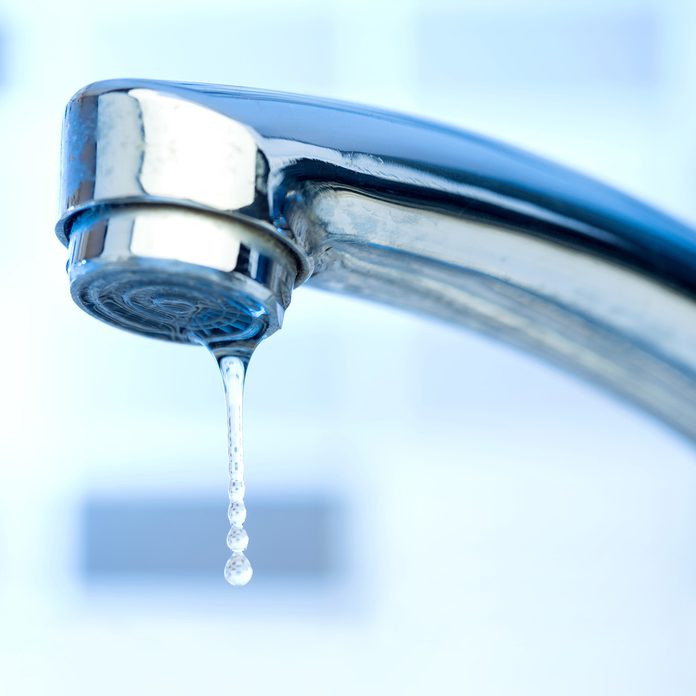
Water Outage
First off, be sure to store your water supply in a cool, dark place. Heat and sunlight can degrade water quality. Plus, go check out these 40 first-time homeowner pitfalls to avoid!
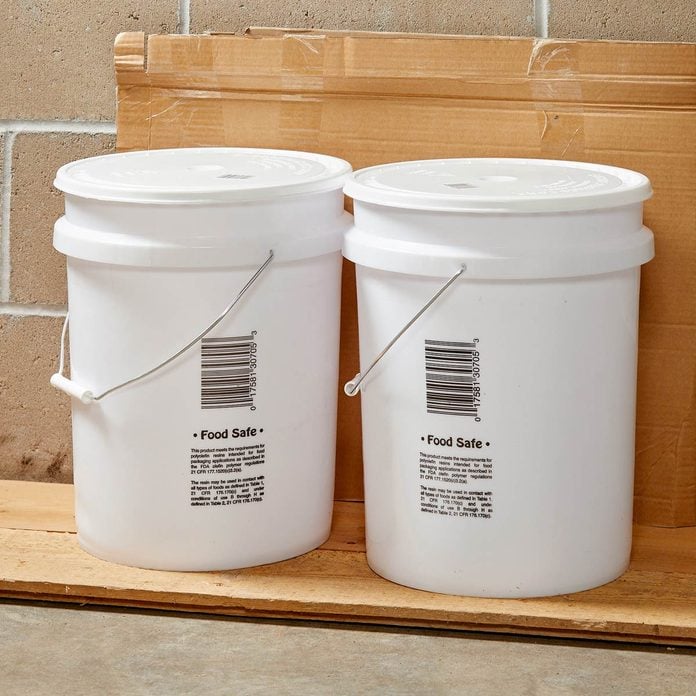
Food Safe Containers
Store water in a food-safe container during a water outage. Water doesn’t have an expiration date, but it can become unsafe to drink if it’s not stored properly. For long-term storage of large quantities of water, food-grade plastic is the gold standard. In a last-minute stock-up for shortterm storage, the gold standard changes to anything that’s clean. In this case, use a method of purification if there’s any suspicion that your water may be unsafe to drink.
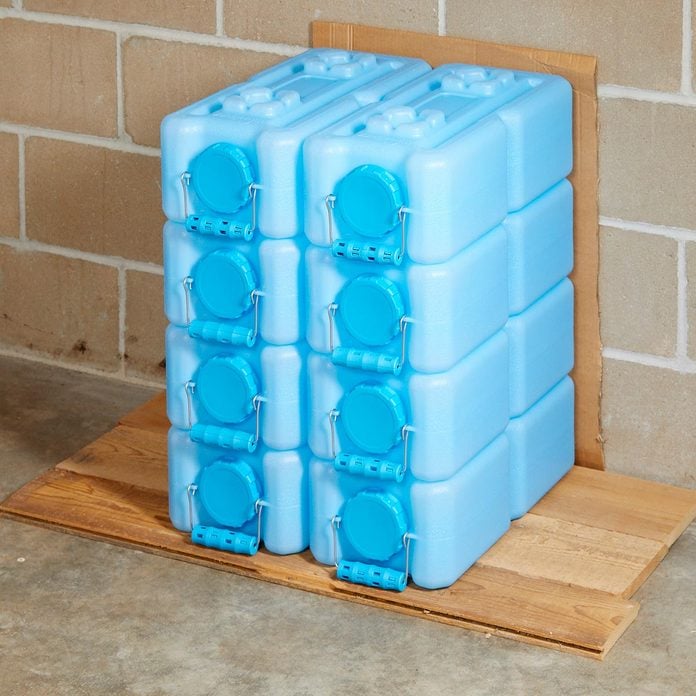
Specialized Water Storage Containers
Consider specialized water storage containers, such as the WaterBrick ($35 each). Made for potable water or food, these food-grade containers have a tight seal and stack like blocks for easy storage.
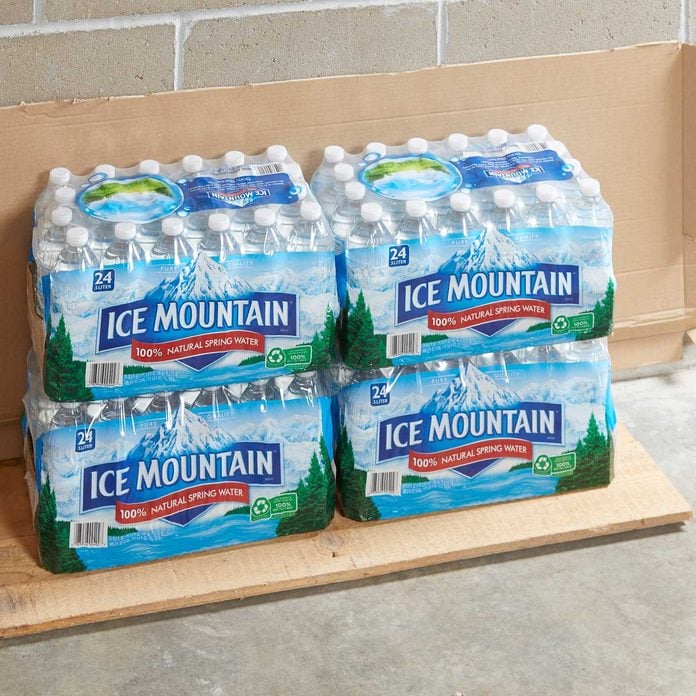
Don’t Store Plastic Water Containers Directly on a Concrete Floor
The chemicals used in concrete—not to mention oil spills on a garage floor—can leach nasty chemicals into your water supply, giving it a bad taste or making it unsafe to drink during a water outage. Store your plastic containers on cardboard or on a wooden pallet.
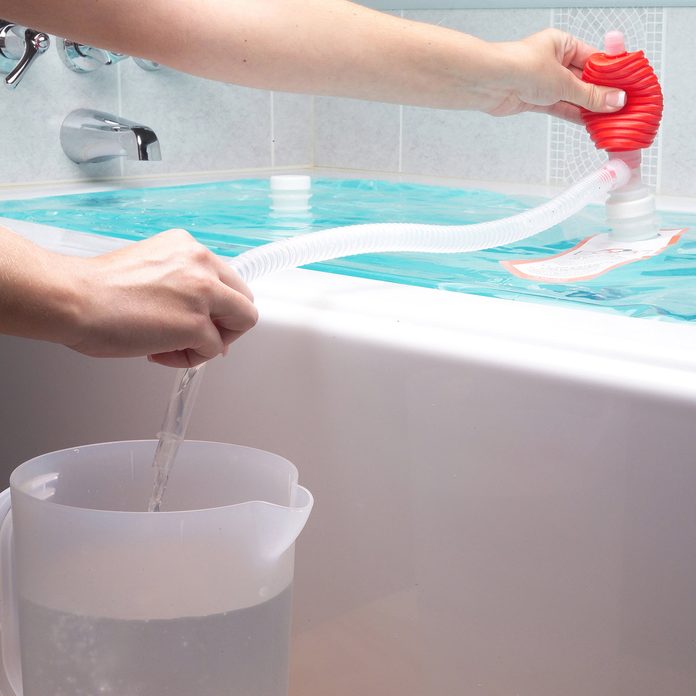
Store Water in a Tub
Buy a water bladder to put in your tub. The WaterBOB ($35) holds 100 gallons of water for drinking. Just set it in your tub, wrap the spout around the faucet and fill it up.
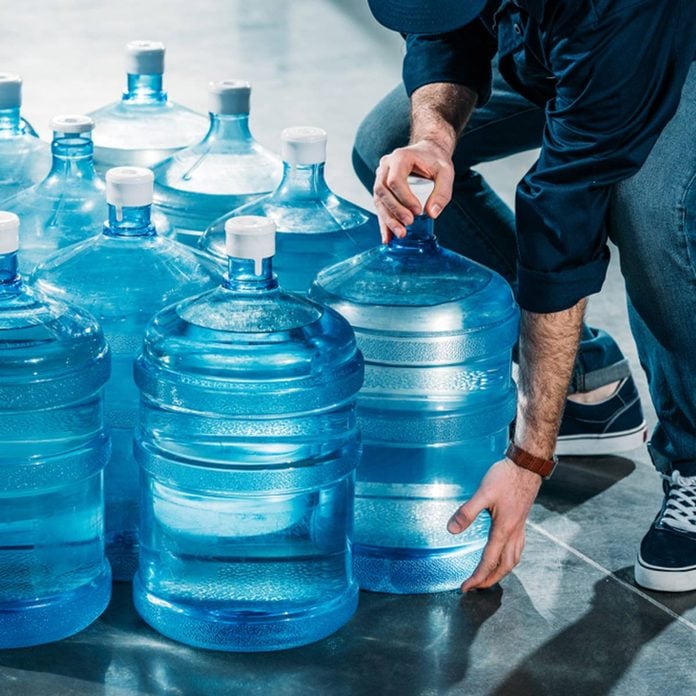
Make Sure You Have Enough Water
Store 1 gallon per day per person. The length of time you want to plan for is up to you. The Federal Emergency Management Agency (FEMA) recommends a two-week supply for each person. When you consider all water use— flushing, showers, hand washing, dishes, laundry, teeth brushing and outdoor watering—that’s a LOT less water than we typically use daily. The U.S. Geological Survey estimates that we use an average of 80 to 100 gallons of water per day per person.
To avoid as many sticky situations as possible check out these 10 hazards you haven’t thought of at home.
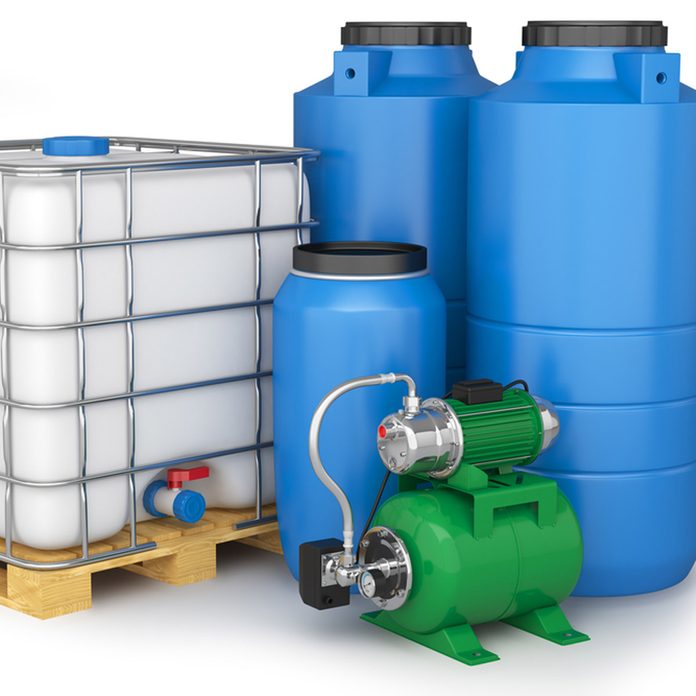
Water Cistern
For serious water storage, consider investing in a cistern. It’s very costly, but you’ll be able to store anywhere from 200 gallons to thousands of gallons of potable water.
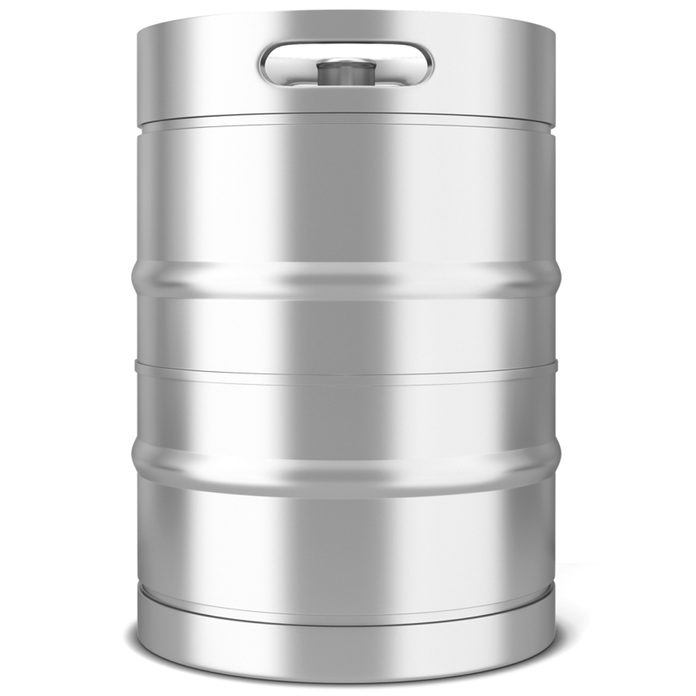
Food-Grade Stainless Steel Drums
Food-grade stainless steel drums are excellent for water storage because they don’t let in UV light. On the downside, a 55-gallon stainless steel drum will set you back about $500.
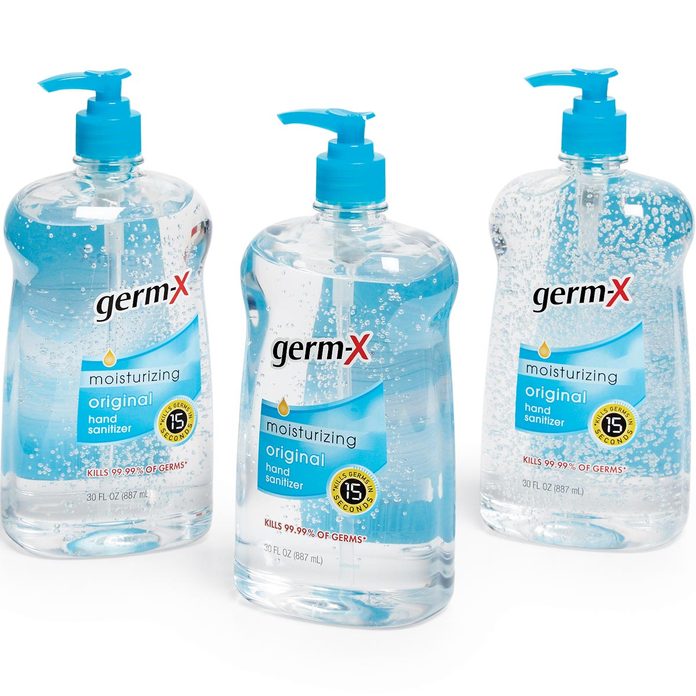
Hand Sanitizer
Stock up on hand sanitizer. By using hand sanitizer instead of soap and water, you can stretch your water supply a little further during a water outage.
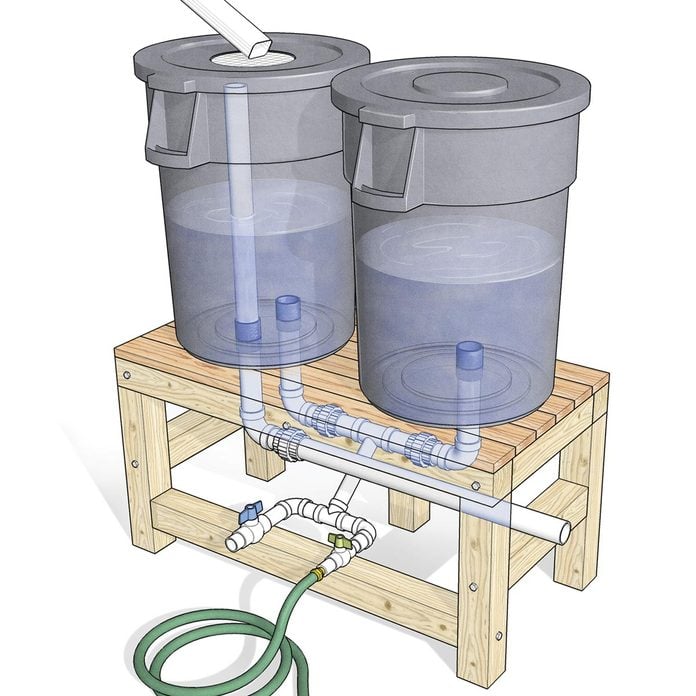
Rainwater Collection System
Install a rainwater collection system. You’ll still need to purify the water, but it’s a good way to take advantage of a natural resource. This DIY rain barrel costs less than $100 and works just as well as the expensive one you can buy. Get complete how-to instructions and start saving water with the next rainfall.
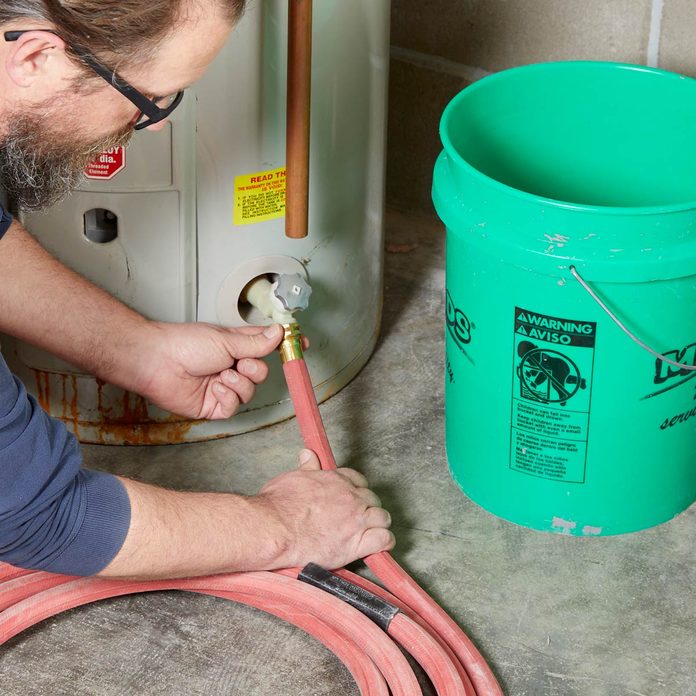
Water Heater Bonus
There are 40 gallons of water or more in your water heater. To extract this water, turn off your water at the house’s main shutoff, and turn off the gas/power to your water heater. Open a couple faucets above the water heater, if possible, to break the vacuum effect. Hook up a hose and drain the water from the tank. If there are solids in the water, filter them out before using it. If you’re looking for other alternatives, then you can always set up a water storage tank for emergencies.
Check out these 10 busted plumbing myths.
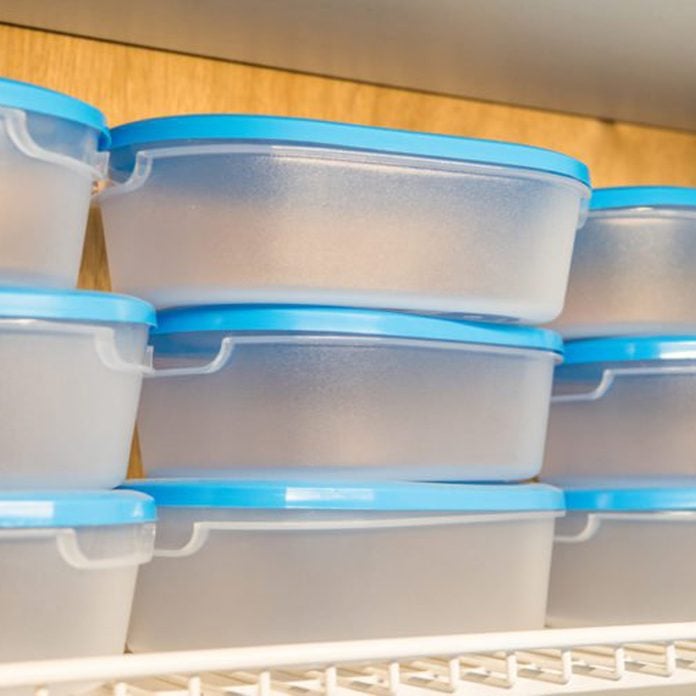
Sealed Containers Are a Must
Don’t store water in a container that can’t be sealed. If a container doesn’t have a tight seal, all sorts of contaminants can enter.
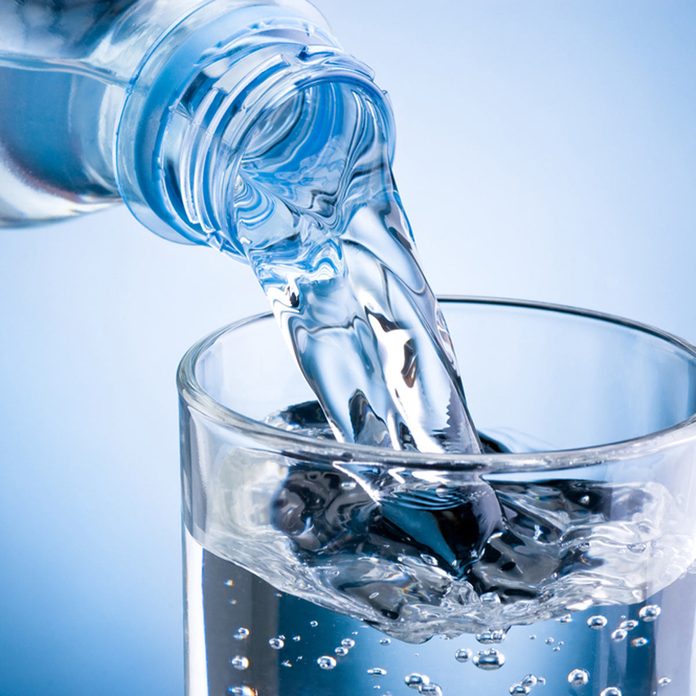
Oxygenate Flat Water
If stored water tastes flat, oxygenate it by pouring it back and forth between two clean containers.

Be Less Active
Decrease your activity and keep cool to minimize the amount of water you need to stay hydrated.
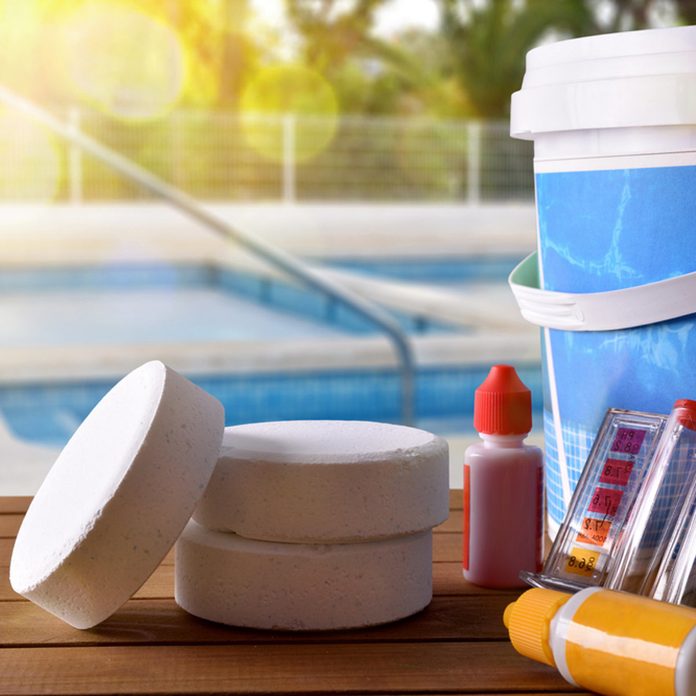
Fill Up Your Pool
Even a wading pool works. This water will need filtration and purification before you can drink it. And there’s nothing more soothing than jumping into cool, clear water on a hot day. We’ve rounded up 10 swim-worthy swimming pool ideas that would make any backyard an instant neighborhood hot spot.
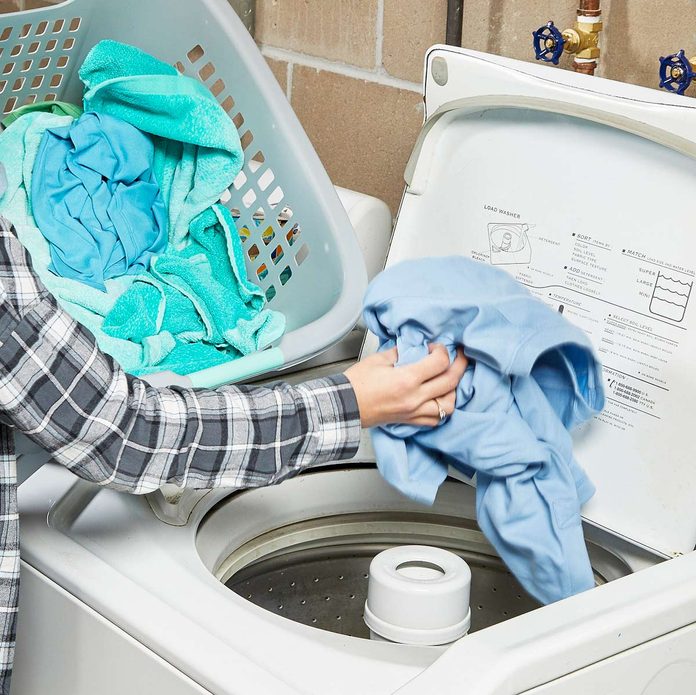
Clean Laundry
Do laundry ahead of time. If you know you’ll likely be without water, be sure you have enough clean clothes to get you through.
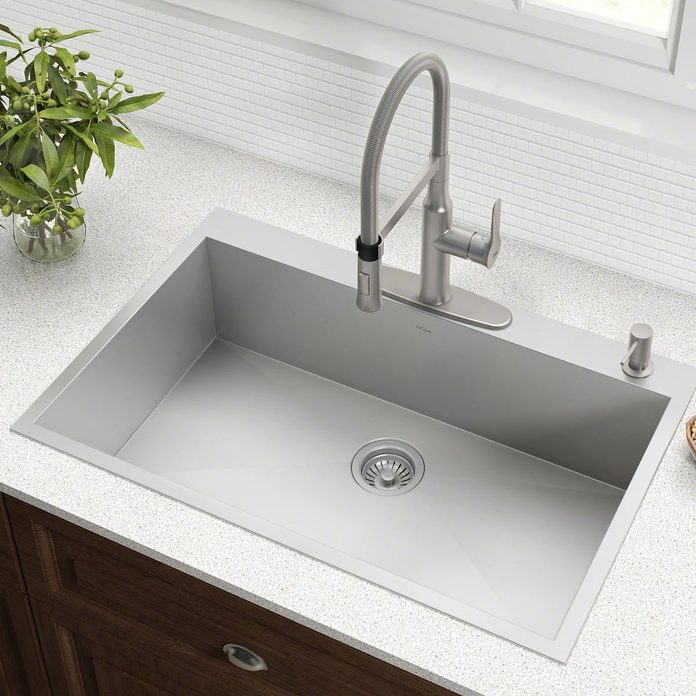
Fill Bathtubs and Sinks With Water
You won’t be able to drink this water without purification, but you’ll be able to use it as is for washing and flushing the toilet during a water outage.
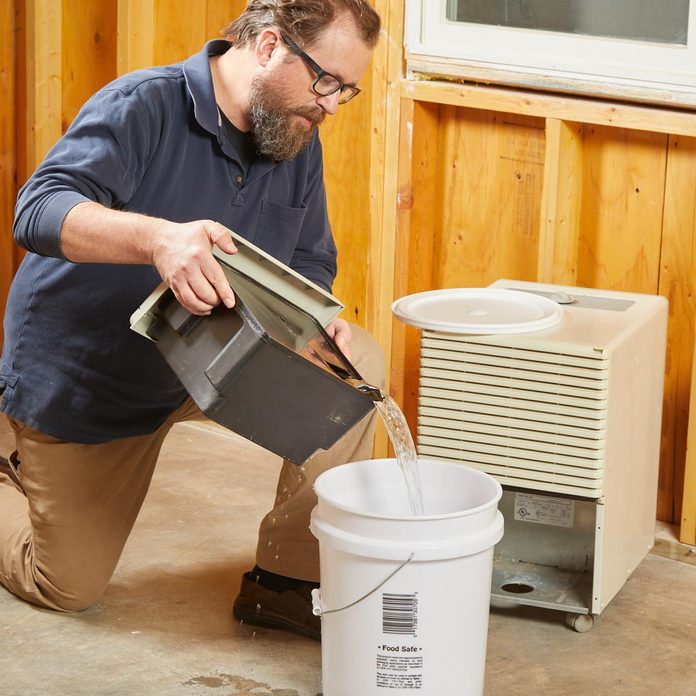
Water From Dehumidifier
If you have power, use the water from your dehumidifier. Yes, it’s distilled water, but you shouldn’t drink it, as it’s not purified or filtered. Use this water for washing, toilet flushing or watering plants.
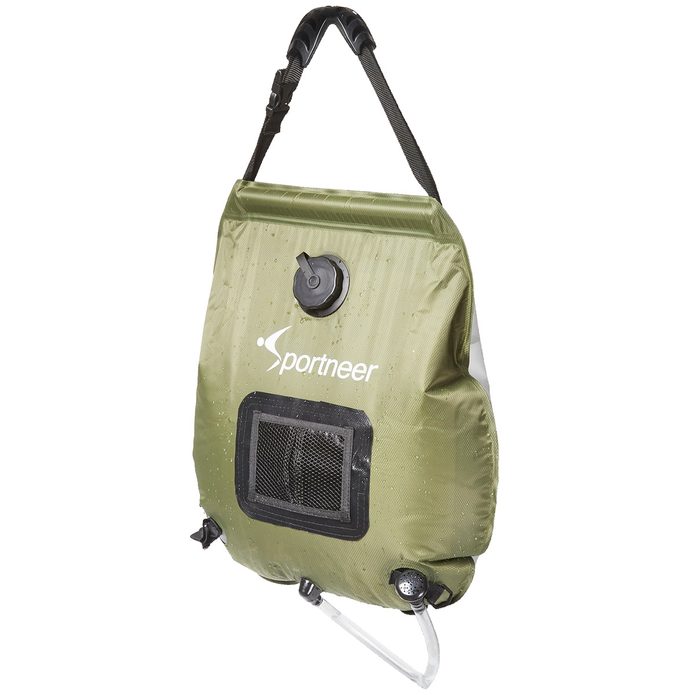
Camping Shower
Camp showers ($10 to $100) are available in a wide variety for those who require a bit more luxury than a sponge bath. This might be a good option if you have a plentiful supply of water.
Before you set out on a camping adventure check out these 15 cool camping accessories you can buy on Amazon. Many are highly rated, inexpensive and perfect for making camping easier and more fun.
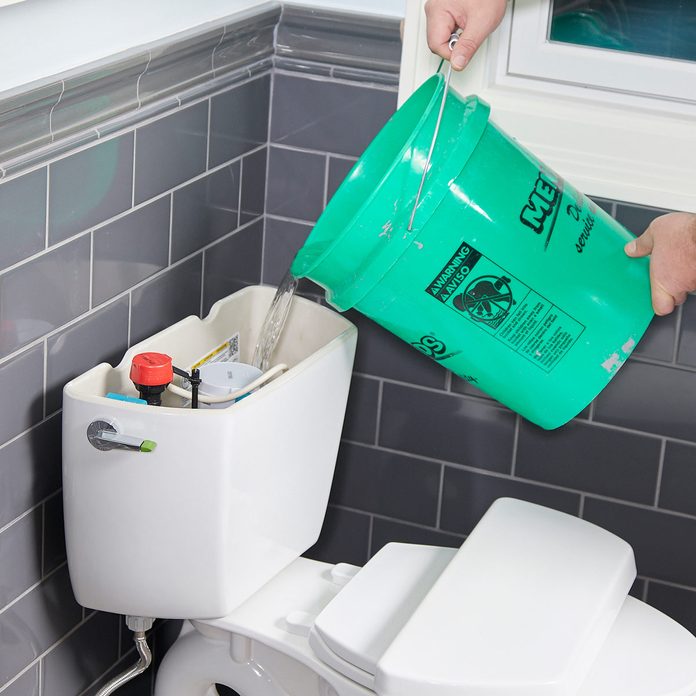
Flush the Toilet With a Bucket of Water
When you flush the toilet with a bucket of water, but pour it into the tank instead of the bowl. This method uses less water than pouring it directly into the bowl. Unpurified water, such as water stored in the tub without a container, is perfect for toilet flushing.
Learn the simple four-step strategy that solves 95 percent of toilet flush problems. Stop water from constantly running, give a wimpy flush a boost, and solve other common problems quickly and easily.
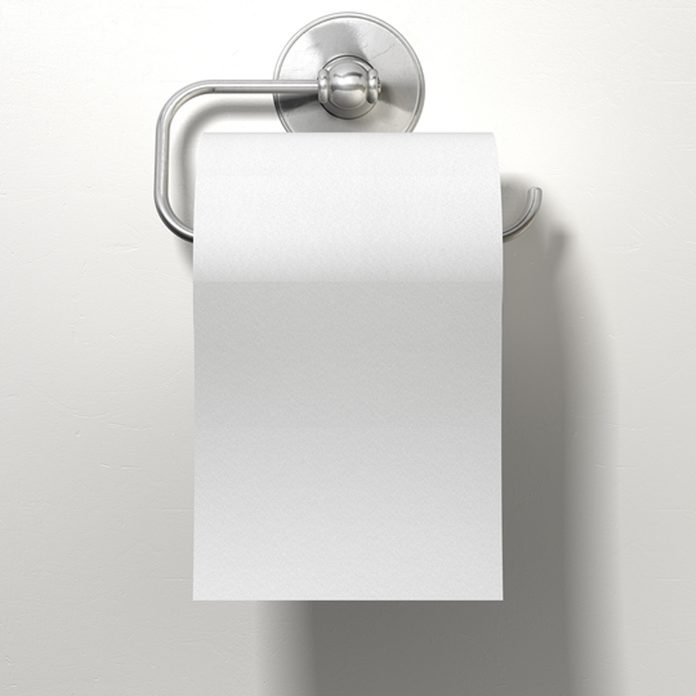
Toilet Paper Absorbs Water
Dispose of toilet paper in a wastebasket. Yes, you’ll still be flushing your toilet, but there won’t be the typical amount of water going through the drain from other sources, so it’s more likely that toilet paper could cause a backup.
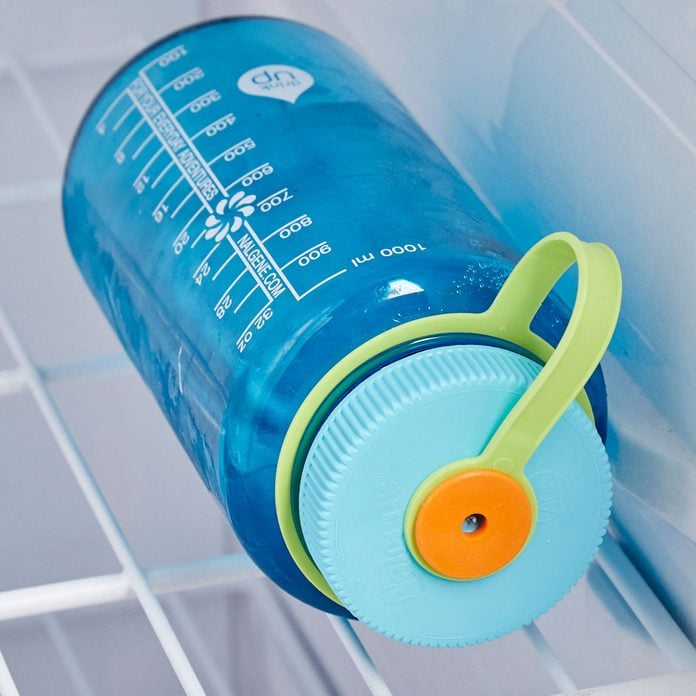
Bottled Water
If you’re storing plastic bottles of water for an emergency, you should use/rotate your supply once a year or so.
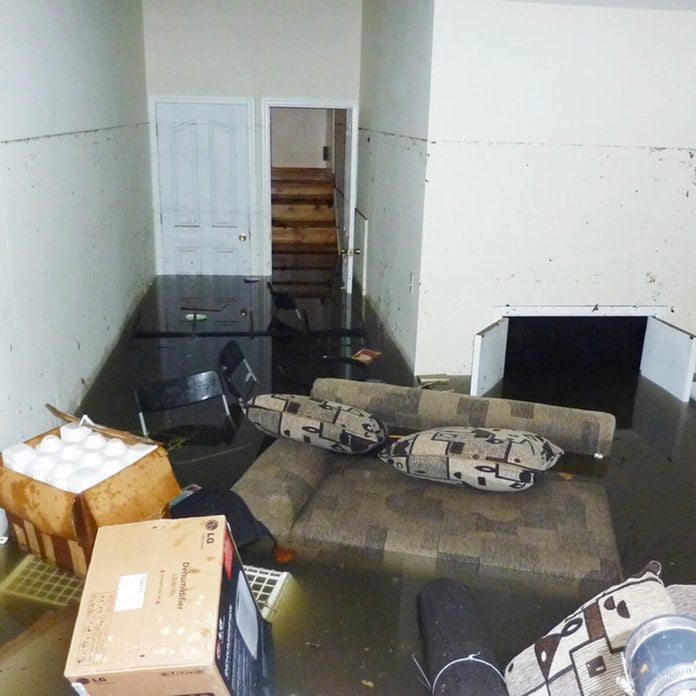
Flood Water
Avoid contact with floodwater, which can be extremely toxic. It likely contains all sorts of chemicals as well as raw sewage.
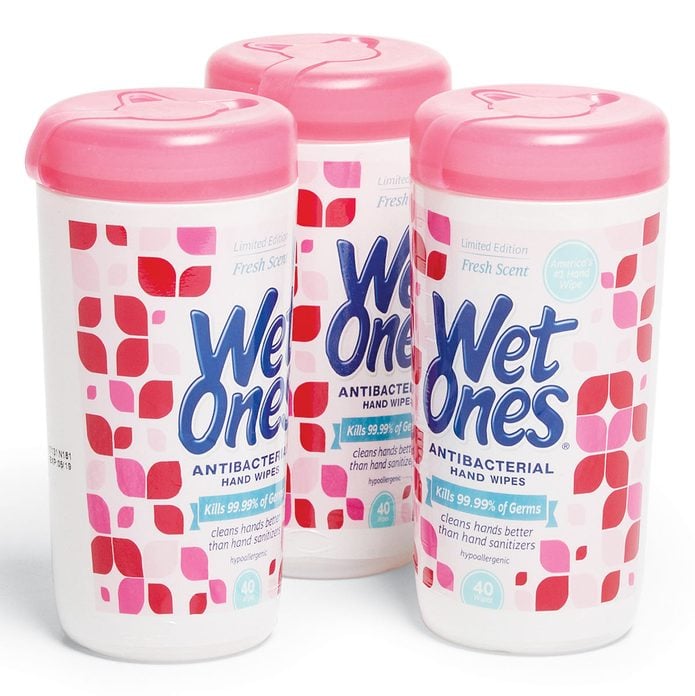
Cleaning Without Soap and Water
Stock up on Clorox wipes and hand wipes. Use these for general cleaning instead of soap and water.
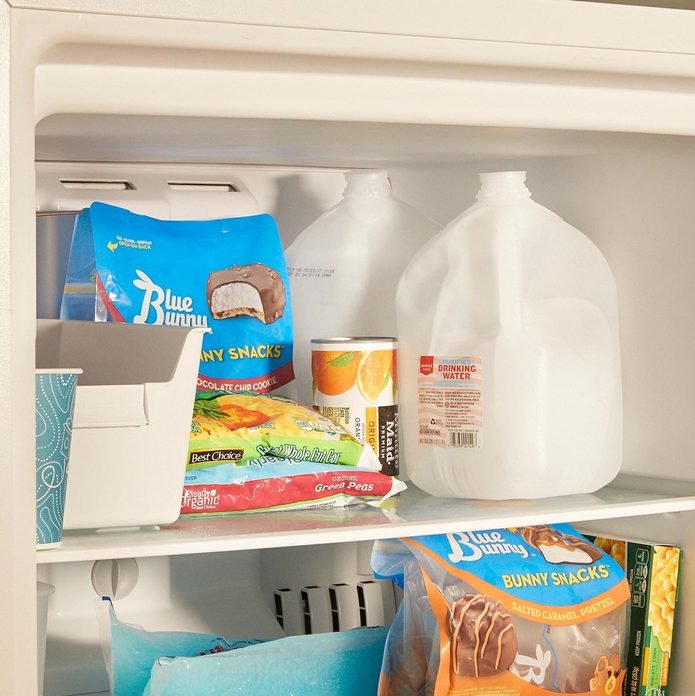
Freezer Hack for Power Outages
Freeze Jugs of Water. If the power is out, they’ll help keep your frozen food safe a bit longer. When the ice melts, you can use it for drinking. A power outage is more than an inconvenience; it can lead to expensive repairs and may even be dangerous to you and your family. These 10 tips to survive a blackout will help you protect yourself, your wallet and maintain some conveniences in a blackout.
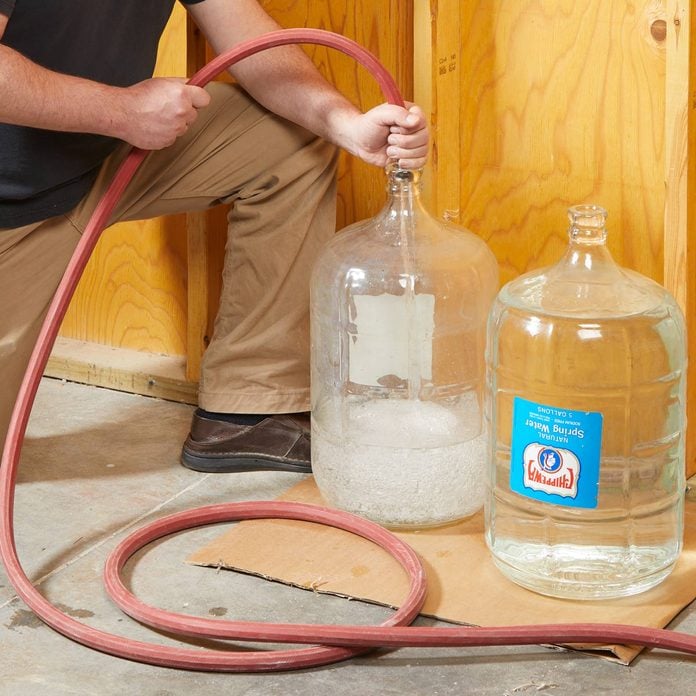
More Water Storage
Glass containers are good, if properly sanitized. But they’re heavy to transport and they break easily during a water outage.

Filtering Water
Filter out solids through a coffee filter before purifying water.
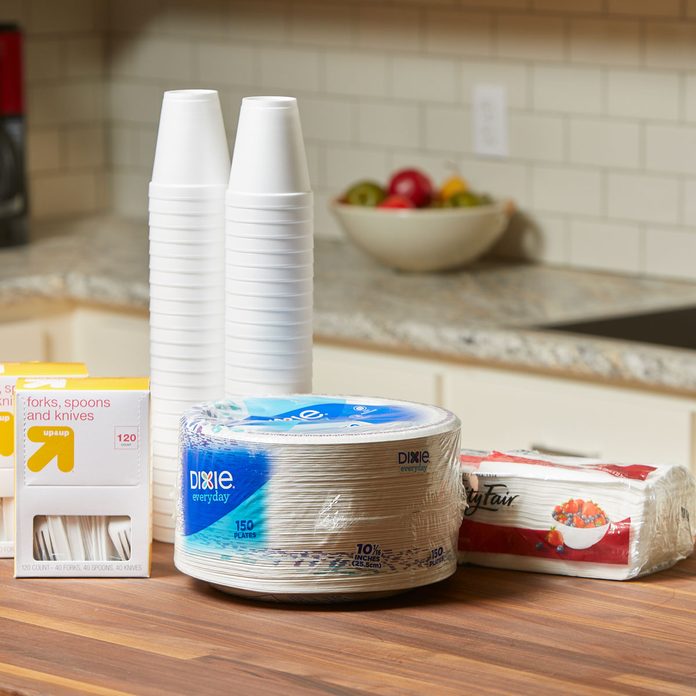
Fewer Dishes to Wash
Stock up on disposable plates and utensils. Conserve your supply of water by minimizing the number of dishes you have to wash.
It’s never too early to prepare your family and your home for hurricanes, severe weather or natural disasters.
